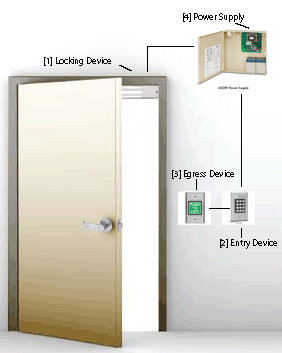 Door access control systems provide selective, authorized and secure access to specific areas within various rooms and facilities of your facility or office. Simply put, it also keeps unauthorized people out. Electronic keypads secure each doorway and they simplify the management of your office. You no longer have to worry about lost keys, or the keys that are being held by terminated employees. You never need to worry about who has access to any particular area.
Door access control systems provide selective, authorized and secure access to specific areas within various rooms and facilities of your facility or office. Simply put, it also keeps unauthorized people out. Electronic keypads secure each doorway and they simplify the management of your office. You no longer have to worry about lost keys, or the keys that are being held by terminated employees. You never need to worry about who has access to any particular area.
Determine the purpose of the Door Access Control
Initially, it is important to determine the goals of the control access. Basically, the system serves to keep out unauthorized personnel or visitors from certain areas. Access control can be achieved at the front door, the IT Room, records areas, the garage, or any other area that is deemed as special or sensitive. You can also use the system to track employee hours. So, how secure do you need each area to be? Security starts with keypads or swipe cards but higher security and redundancy can be achieved with thumbprint scanning. This coupled with CCTV systems can provide excellent access security.
Determine the scope of access control
Once you have determined the need for access control, the first obvious question is how many doors need to be secured. Maybe you only need to secure your IT Room because it houses your network computer. In that case, an electronic keypad lock might suffice as a solution for a small access control system. Quite often, all you need is a keyed door knob. But proper planning can help you provide higher security where needed, while also enabling for future expansion, if needed. One and two-door systems are not very expandable while many four-door and larger systems can be expanded. So, knowing the number of doors you need to secure is the first step. After that, it is critical to compile information on each door to determine the best solution.
At each door:
- Who will need access? Do you need access for customers and employees or just employees?
- What is the door structure? Is it framed in drywall or concrete? Is it a wood, steel or glass door?
- Is the door designated as a fire exit?
- Do you have any parking lot gates or garage doors that need special access control?
- Is this a multi-site installation that requires control from a central security office?
- Finally, you need to determine if exit control is also needed. There are two types: free exit and controlled exit. Free exit allows for leaving when the system detects the person through motion detection or with a physical button or bar release that enables exit. Controlled exits require the same method in both directions. Employees have to enter a keypad code or wave the keycard to get out.
If you need help in the planning or implementation of a door access control system, please contact us. We will do a free on-site analysis and proposal.

